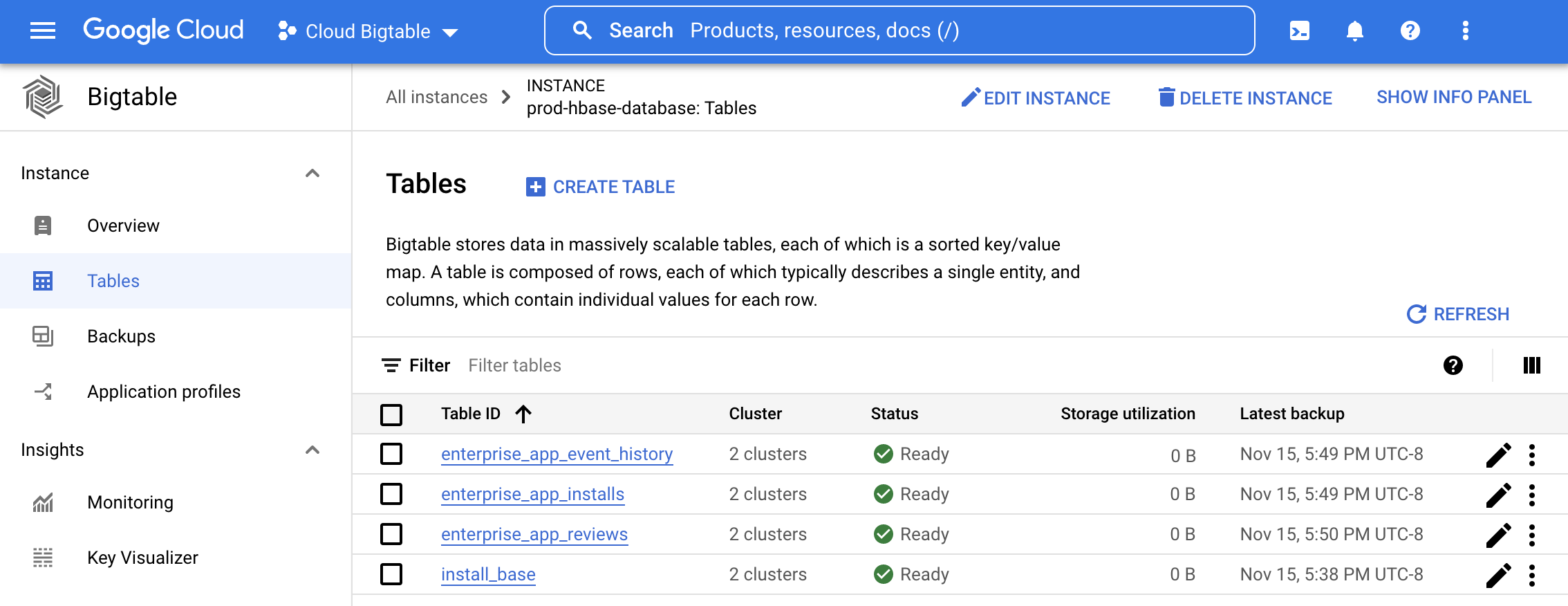可选 HBase 组件的安装仅限于使用映像版本 1.5 或 2.0 创建的 Dataproc 集群。
虽然 Google Cloud 提供了许多服务,可让您部署自行管理的 Apache HBase,但 Bigtable 通常是最佳选择,因为它提供了一个具有 HBase 和工作负载可移植性的开放式 API。HBase 数据库表可以迁移到 Bigtable 以管理底层数据,而之前与 HBase 互操作的应用(例如 Spark)可以保留在 Dataproc 中并安全地连接到 Bigtable。在本指南中,我们提供了开始使用 Bigtable 的概要步骤,并提供了将数据从 Dataproc HBase 部署迁移到 Bigtable 的参考信息。
开始使用 Bigtable
Cloud Bigtable 是一个高度可伸缩且性能出色的 NoSQL 平台,可为 HBase 工作负载提供 Apache HBase API 客户端兼容性和可移植性。该客户端与 HBase API 1.x 和 2.x 版兼容,并且可以包含在现有应用中,以便对 Bigtable 执行读取和写入操作。现有的 HBase 应用可以添加 Bigtable HBase 客户端库,以读取和写入存储在 Bigtable 中的数据。
如需详细了解如何使用 Bigtable 配置 HBase 应用,请参阅 Bigtable 和 HBase API。
创建 Bigtable 集群
您可以通过创建集群和表来开始使用 Bigtable,以存储之前存储在 HBase 中的数据。按照 Bigtable 文档中的步骤创建实例、集群和表,这些表的架构与 HBase 表的架构相同。如需了解如何根据 HBase 表 DDL 自动创建表,请参阅架构转换器工具。
在 Google Cloud 控制台中打开 Bigtable 实例,查看表和服务器端监控图表(包括每秒行数、延迟时间和吞吐量),以便管理新预配的表。如需了解详情,请参阅 Monitoring。

将数据从 Dataproc 迁移到 Bigtable
在 Bigtable 中创建表后,您可以按照将 HBase on Google Cloud 迁移到 Bigtable 中的指导导入和验证数据。迁移数据后,您可以更新应用以向 Bigtable 发送读取和写入操作。
后续步骤
- 如需了解如何使用 Bigtable 运行 Spark,请参阅 Wordcount Spark 示例。
- 查看从 HBase 到 Bigtable 的实时复制,了解在线迁移选项。
- 观看 Box 如何对其 NoSQL 数据库进行现代化改造,了解其他优势。
